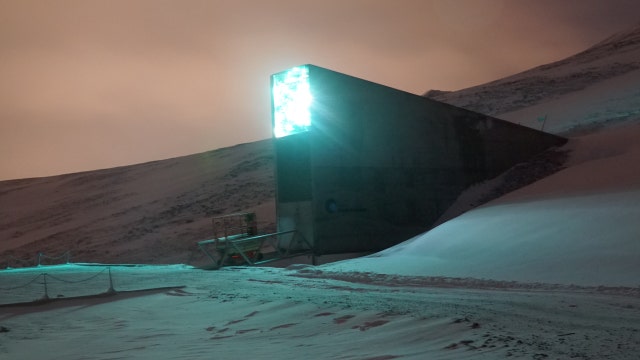Syrian war prompts withdrawal of seeds from doomsday vault
Officials say they conducted the shipments in secret for security reasons
Does Norway know something we don’t?
The Scandinavian country announced Monday that it is going to spend about $12.7 million to upgrade its “doomsday” seed vault that is the world’s largest repository built to safeguard against wars or natural disasters wiping out global food crops.
The Verge reported that the upgrades will focus on a new concrete tunnel and “emergency power and refrigerated units and other electrical equipment that emeits heat through the tunnel.”
The Svalbard Global Seed Vault, a gene bank built underground on an isolated island in a permafrost zone some 620 miles from the North Pole, was opened in 2008 as a master backup to the world’s other seed banks, in case their deposits are lost.
The latest specimens sent to the bank, located on the Svalbard archipelago between mainland Norway and the North Pole, included more than 15,000 reconstituted samples from an international research center that focuses on improving agriculture in dry zones. They were the first to retrieve seeds from the vault in 2015 before returning new ones after multiplying and reconstituting them.
The specimens consisted of seed samples for some of the world’s most vital food sources like potato, sorghum, rice, barley, chickpea, lentil and wheat.
The agency borrowed the seeds three years ago because it could not access its gene bank of 141,000 specimens in the war-torn Syrian city of Aleppo, and so was unable to regenerate and distribute them to breeders and researchers.
Fifty thousand samples were deposited last year from seed collections in Benin, India, Pakistan, Lebanon, Morocco, Netherlands, the U.S., Mexico, Bosnia and Herzegovina, Belarus and Britain. It brought the total deposits in the snow-covered vault — with a capacity of 4.5 million — to 940,000.
The Associated Press contributed to this report









































